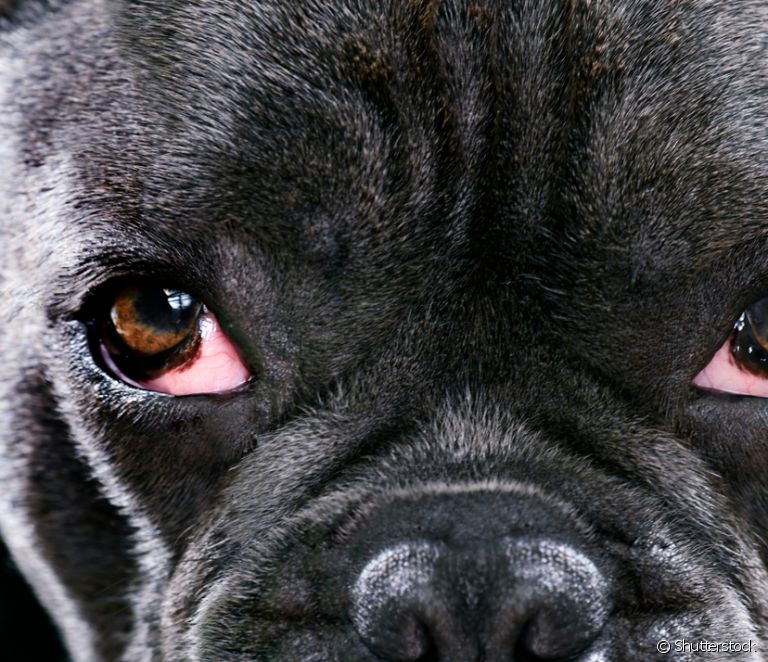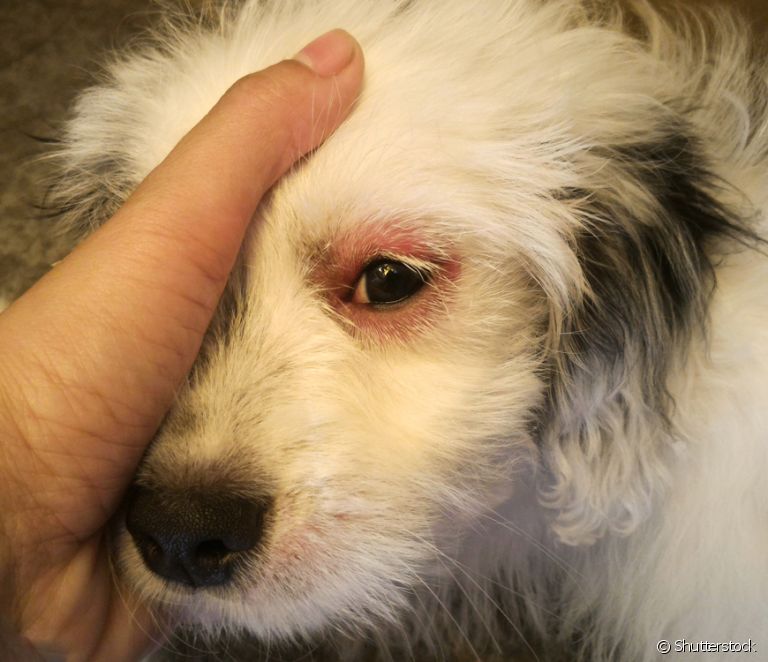Conjunctivitis in dogs: understand the problem, the most common symptoms and how to treat it

Table of contents
It is not uncommon for your pet to appear with a red eye and even more discharge than normal. There are many factors that can trigger this, such as dust, scratches from other animals in the area and even allergies. In all cases, it is very important to be aware of anything different in your dog's eye, as it may be a case of conjunctivitis. In dogs, as well as conjunctivitis in cats,the problem can progress to a much more serious degree. Do you want to know more about this nuisance that can affect your friend? Come more and we'll explain!
See_also: Why does the dog eat grass? Understand the reasons!Conjunctivitis in dogs: what are the causes?
Many people don't know, but dogs have a third eyelid in their eyes, called the nictating or conjunctival membrane. It is this membrane that protects the eyes in case it comes into contact with any danger, such as bacteria or even sun glare. Do you know when you look at your dog while he is sleeping and you see that his eye is missing the iris and pupil? That is the third eyelid. In some cases, the membraneconjunctiva can inflame for external reasons, causing what we call conjunctivitis in dogs.
This membrane does not cause any problems in the vision of our pets. What happens is that it can inflame for several reasons. An example is when dogs ride in cars with their heads out of the window, receiving a little wind that brings some bacteria. It can also occur when having contact with cleaning products that have chemical components or, still, when suffering an injury in the eye area.In some breeds, such as Cocker Spaniel, Pug and Chow Chow, the dog gets conjunctivitis due to a phenomenon called "prolapse of the third eyelid", which occurs when this membrane does not return to its place. Normally, it is expected that it returns within 6 hours. It is important to observe if your dog's eyelid does not return to the eyeball, ok?!
All these factors can contribute to the inflammation of the membrane, generating a case of conjunctivitis in dogs that should be treated as soon as it is diagnosed. It is very important that the treatment for conjunctivitis is done correctly, as this disease is very serious and can lead to your puppy losing his sight completely!




Symptoms of conjunctivitis in dogs: keep an eye out!
The symptoms of conjunctivitis are quite apparent, so it is not difficult to identify the disease. The problem is that some owners think that these symptoms are common and, by the time they realize it, the animal's eye is already completely inflamed. To confirm if the dog has conjunctivitis, you should pay attention to the following characteristics:
Excessive pimples;
See_also: Do you need to bathe your dog before grooming?Red or swollen eye;
Scratches on the ocular membrane;
Difficulty keeping eyes open;
Lacrimation.
Conjunctivitis in dogs lasts how long?
If you notice that your dog has suspected conjunctivitis, take him to the vet urgently. Depending on the severity of the injury that caused the conjunctivitis, the dog usually improves completely within a fortnight, as his body usually responds well to treatment. The ideal is to diagnose early to start the correct treatment.
Dog with conjunctivitis: learn about treatment!
There is no home remedy recipe for canine conjunctivitis, so it is very important that at the first symptoms, your pet is taken to a consultation with the veterinarian. Only a trained professional can recommend the best form of treatment for this disease. If the case is milder, the recommendation may be the use of eye drops for canine conjunctivitis with cleaning of the region,usually done with the use of gauze and saline solution. If it is in a more advanced state, it may be the case to enter an antibiotic for canine conjunctivitis. Do not try to use any homemade alternative, as this can further damage your furry one's vision!

